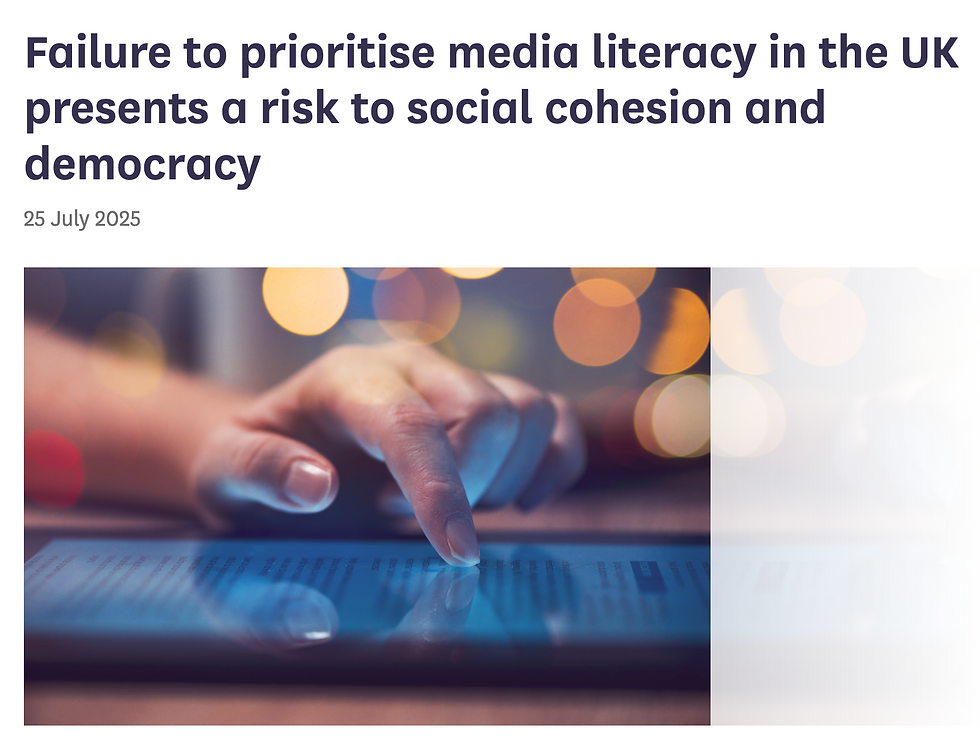Curriculum for Climate: Reflections from the Royal Meteorological Society Conference
- The Media Education Association

- Apr 1
- 2 min read
Last month, one of our executive members, Brian Mulligan, had the opportunity to attend the Curriculum for Climate conference. Here is his report from the day:
It was a thought-provoking event organised by Sylvie Knight through the Royal Meteorological Society. The aim of the day was clear: to promote climate education in a way that genuinely informs curriculum development—particularly in light of the Government’s ongoing Curriculum and Assessment Review.
A key challenge quickly emerged. Cross-curricular initiatives, while well-intentioned, often falter due to a lack of shared language and common ground between subject areas.
After the welcome and introduction, Media was grouped with English, Music, and Drama. The initial discussion was dominated by frustrations over the disproportionate focus on Maths and English in current policy conversations. However, the group soon found common purpose, proposing the creation of a road map to guide curriculum design. The idea? That individual subject associations could develop case studies to support teachers in embedding climate themes in their own disciplines.
Our sub-group chose to focus on three key overlapping themes: Empathy, Community and Culture, and Critical Thinking.
So, how might climate be brought meaningfully into the curriculum?
Knowledge
Context matters. We need to ask: How did we get here? This includes addressing competing historical narratives that shape public understanding of climate change.
Use fiction to explore fact. Fictitious worlds—particularly in sci-fi—can help students grapple with complex real-world problems.
Interrogate misinformation. Climate debates are often muddied by greenwashing and disinformation. We must ask: Is capitalism positioning itself as the solution to problems it created?
Skills
Create through community. Climate content shouldn’t be limited to theory—it can be explored through collaborative production.
Bring stories to life. Film-making, podcasting, and role-play offer rich opportunities for students to engage creatively and critically.
Develop oracy. Encourage open questions and nuanced debate: Should all plastics be banned? What are you prepared to sacrifice for the greater good?
Understanding
Learning is a process. Encourage students to develop and question narratives, not just absorb them. This builds critical thinking and helps foster empathy.
A note of caution…
We also touched on the importance of framing. Some topics—such as the social justice dimensions of climate protest—may be considered too controversial in certain contexts. One English Association representative shared the varied reactions schools have had to picture books that explore climate-related themes at primary level.
These discussions revealed the complexity—but also the potential—of weaving climate education through the curriculum. By rooting it in empathy, creativity, and criticality, we can move beyond tokenism and toward meaningful learning experiences that resonate with students.
Brian Mulligan






Comments